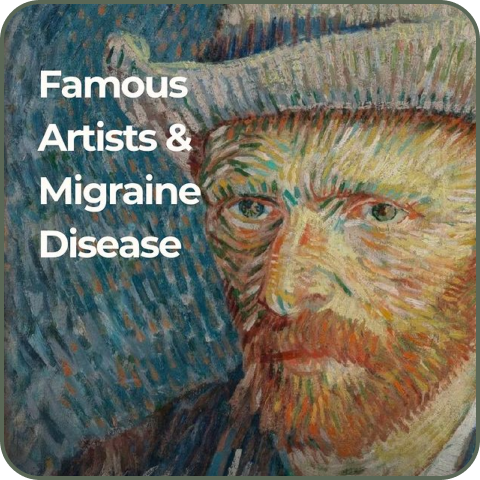Have you ever noticed a headache creeping in when a storm approaches or humidity rises? You’re not alone. Many migraine sufferers report that specific weather conditions seem to act as invisible triggers, leading to painful attacks. But why does this happen, and how can we better manage it? In this article, we’ll dive deep into how weather triggers migraines, explore the scientific evidence, and offer unique insights from Traditional Chinese Medicine (TCM). Let’s uncover why Western medicine often overlooks weather-related migraines and how you can anticipate and manage them more effectively.
The Science Behind Weather and Migraines
Western research has long explored how environmental changes can impact health. When it comes to migraines, four major weather factors have been strongly linked to attack onset:
1. Barometric Pressure Changes
Fluctuations in atmospheric pressure, particularly drops before a storm, are associated with increased migraine frequency.
- Research Insight: A study in The Journal of Headache and Pain found that lower barometric pressure correlated with more frequent and intense headaches.
- Possible Mechanism: Changes in pressure could alter oxygen levels in the brain, leading to vasodilation and triggering pain pathways.
2. Temperature Extremes
Both sweltering heat and biting cold can provoke migraines.
- Research Insight: A Neurology study found a spike in migraine-related emergency visits when temperatures rose by just 9°F (5°C).
- Mechanism: High heat can cause dehydration, while cold tightens blood vessels and increases muscle tension, exacerbating migraine pain.
3. Humidity Levels
High humidity doesn’t just make you uncomfortable—it could also spark a migraine.
- Research Insight: Humidity affects body temperature regulation and can lead to dehydration and sinus pressure changes, both known migraine triggers.
4. Storms and Lightning
Electrical storms bring more than thunder; they might bring migraines too.
- Research Insight: A Cephalalgia study revealed a 24% increase in migraines when lightning was detected within 25 miles of a patient’s home.
🔹 Real Story: Emma, a Migraine Hero, noticed severe migraines every time surfing conditions improved. Her symptoms were initially dismissed, but after examining barometric shifts and ocean winds—and with the help of TCM—she finally found relief.

Traditional Chinese Medicine (TCM) Insights: Weather and Migraines
Unlike Western medicine, which often treats symptoms after they occur, TCM emphasizes proactive balance between the body and the environment.
1. Wind: Internal and External Disruption
In TCM, wind represents sudden changes and instability.
- Effect: It can invade the head, particularly through the neck, leading to headaches that change location—classic “wind” migraines.
2. Heat: Internal Inflammation
Hot weather increases “yang” energy, potentially overstimulating the liver system.
- Effect: Heat-induced migraines are more common in individuals with liver imbalances or medication-induced toxicity.
3. Dampness: The Heavy Influence of Humidity
Humidity is linked to sluggish circulation and “brain fog” in TCM.
- Effect: Those with internal dampness (e.g., bloating, cellulite, estrogen dominance) are more vulnerable to migraine triggers from humid weather.
4. Cold and Stagnation
Cold weather can cause Qi (energy) and blood stagnation, resulting in sharp, stabbing migraines.
- Effect: Individuals with chronically cold extremities are particularly susceptible.
What the West Is Missing About Weather-Triggered Migraines
Western medicine excels at observing correlations but often struggles with proactive strategies.
Key gaps:
- After-the-fact observation: Western science often studies migraines once they have occurred.
- Hypothetical Mechanisms: There’s little focus on daily preventative measures based on weather changes.
- Over-reliance on Medication: Chronic medication use increases liver toxicity and dampness in the body, setting up long-term vulnerability to weather-induced migraines.
🔹 Deeper Problem:
Medications can worsen the internal “climate” of the body, leading to dampness, sluggish digestion, brain fog, and prolonged migraine hangovers.
🔹 Better Approach:
Think of your body as having its own climate system. Managing internal dampness, wind, heat, or cold can make you more resilient to external weather shifts.
Practical Strategies to Anticipate and Manage Weather-Triggered Migraines
- Track weather patterns alongside migraine journals.
- Adjust your environment (e.g., minimize exposure to AC drafts, regulate humidity indoors).
- Support liver health: Use TCM-based herbal remedies and detox techniques (consult a qualified practitioner).
- Balance internal dampness: Address gut health with diet and lifestyle modifications.
Conclusion
Migraines triggered by weather changes are real—and there’s a lot more to managing them than simply “taking a pill.” By understanding both Western science and Traditional Chinese Medicine, you can build a better, proactive strategy to safeguard your health.
Next time the pressure drops or the humidity spikes, you’ll be ready—not helpless.
Join the Migraine Heroes Community
💡 New podcast episodes drop every Monday and Wednesday! If you’re a migraine warrior, you’re in the right place.
📲 Download the Migraine Heroes App—the only service worldwide that teaches you how to prevent and stop migraines by adding selective foods to your diet. Start tracking and finally take control of your health!
🔗 www.migraineheroes.com





